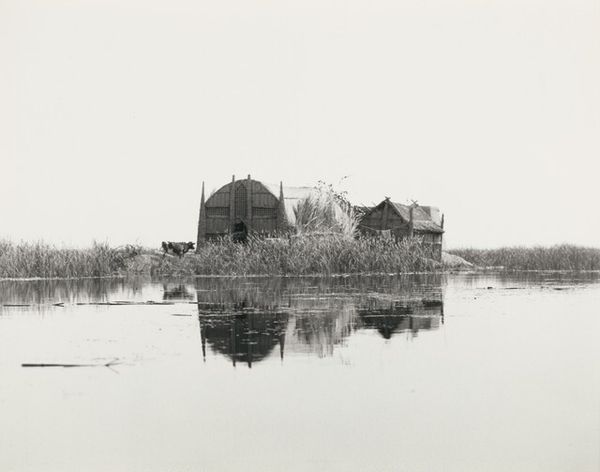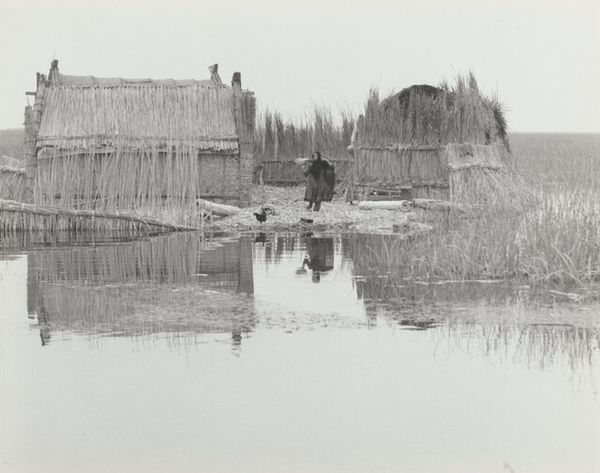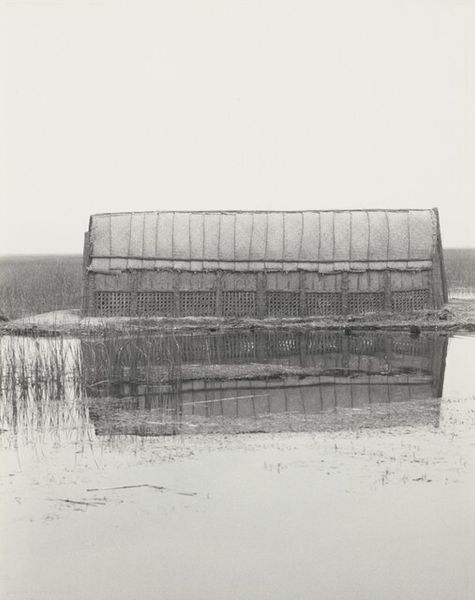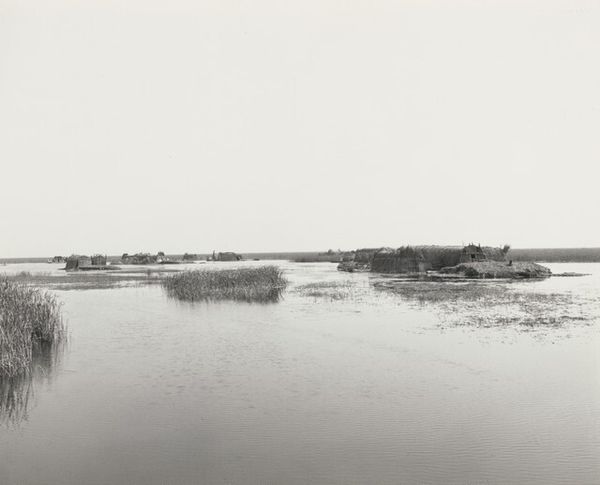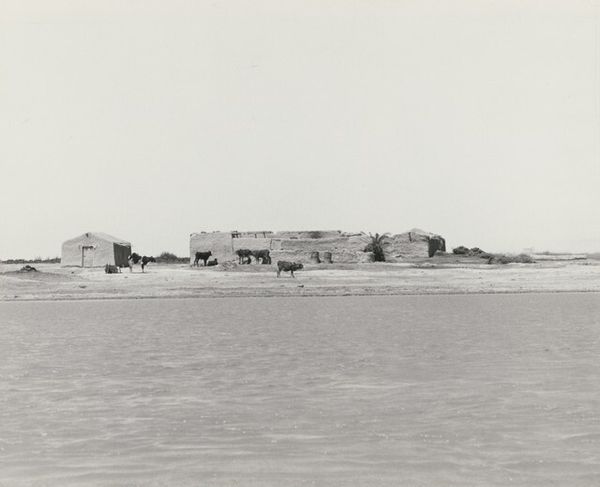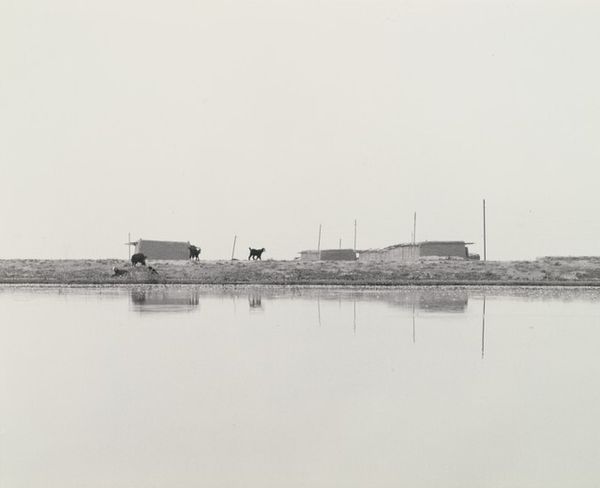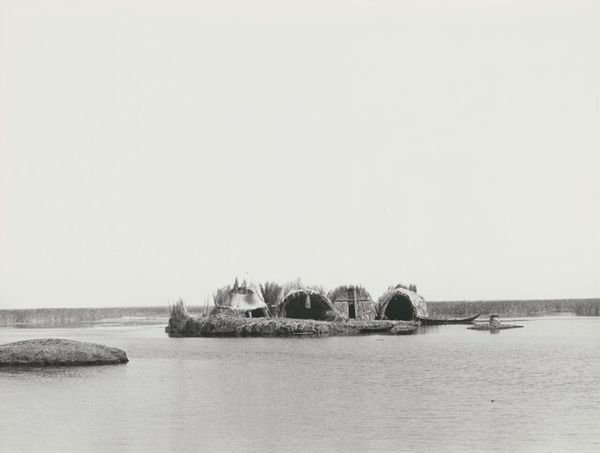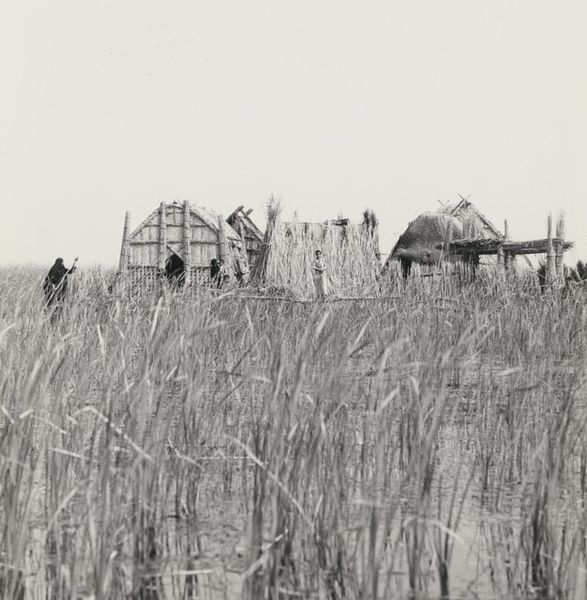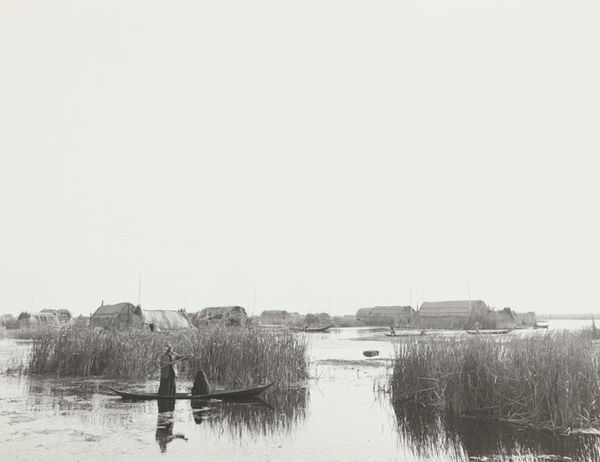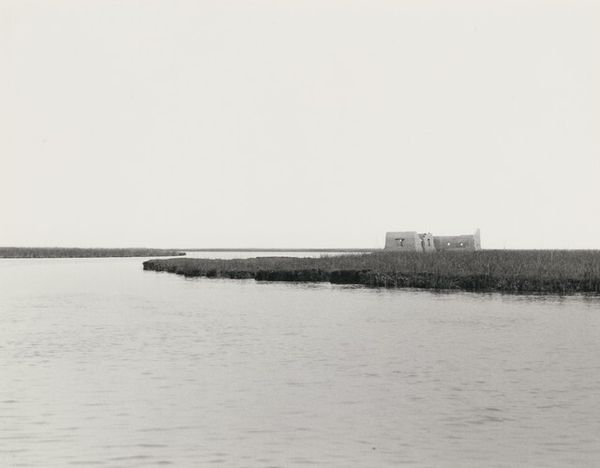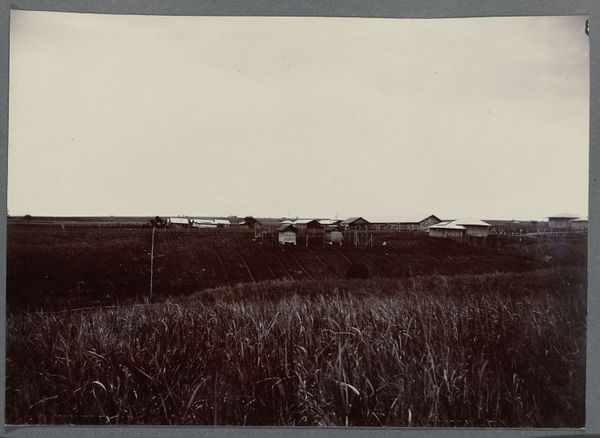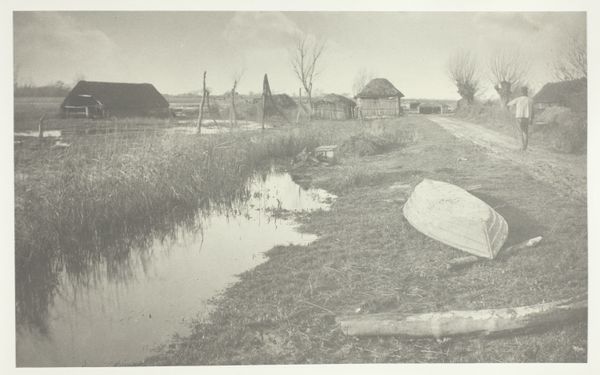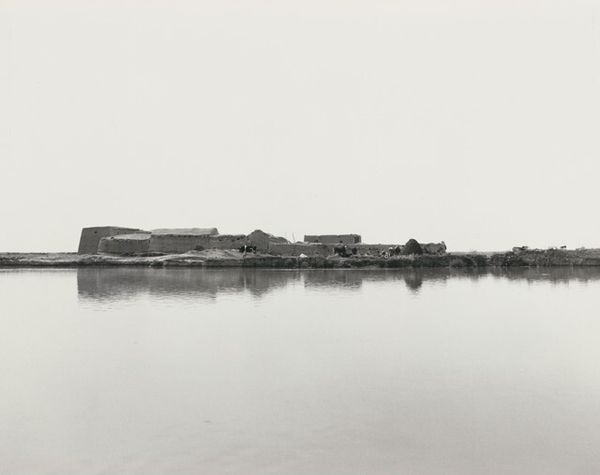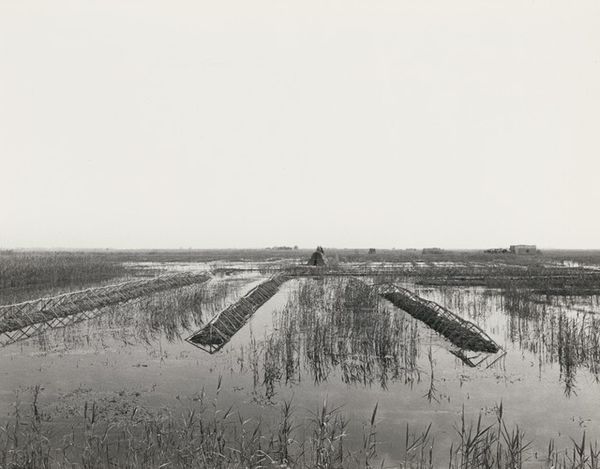
photography, gelatin-silver-print
#
excavation photography
#
scenic
#
natural shape and form
#
black and white photography
#
countryside
#
landscape
#
photography
#
outdoor scenery
#
gelatin-silver-print
#
monochrome photography
#
outdoor activity
#
skyscape
#
monochrome
#
shadow overcast
Dimensions: image/sheet: 22.5 × 30 cm (8 7/8 × 11 13/16 in.)
Copyright: National Gallery of Art: CC0 1.0
Curator: Ursula Schulz-Dornburg's "Untitled" from 1980, rendered in gelatin silver print, greets us today. It presents a view that seems to hang between the real and imagined. What's your initial impression? Editor: Bleak beauty. It's elemental. The monochromatic palette emphasizes the textures—the thatched structures against the stillness of the water. There's a haunting quality to it, almost biblical. Curator: That stillness you describe... it’s almost meditative. Schulz-Dornburg often explores peripheries, edges of civilization, where humanity confronts nature. I'm drawn to the human presence there, but everything feels precarious and fragile. Editor: Absolutely. I'm immediately considering how the thatching was sourced and assembled. Was it locally sourced? Who built these structures, and what function do they serve? The "how" of their making tells us so much about human adaptation. It suggests resourcefulness borne of necessity. Curator: True. The stark contrast achieved through the gelatin silver process certainly amplifies that sense of material vulnerability. It’s as if we're seeing these constructions teetering on the very edge of survival. Do they offer permanence or are they as impermanent as a fading photograph? Editor: The lack of color draws my focus to the light, to the tonality. Each shade carries a weight, an index of the labor embedded in its creation. Are they living structures, workplaces, or something else entirely? That's the question this photograph begs us to confront. The craft is front and center. Curator: And craft rooted in environmental response and modification of materials. This image invites us to see these structures as both products and components of landscape. They blur, become one. Editor: It challenges the notion of a pristine, untouched nature. These are built forms within an ecosystem, each informing the other. Schulz-Dornburg shows us that human interventions, even at their most humble, shape our world irrevocably. Curator: A thought-provoking intersection between form, function, and material presence. It prompts us to reconsider how we perceive both our built and natural environments. Editor: Indeed, and by stripping away the superfluous, Schulz-Dornburg highlights the profound relationship between labor, landscape, and our built world.
Comments
No comments
Be the first to comment and join the conversation on the ultimate creative platform.
